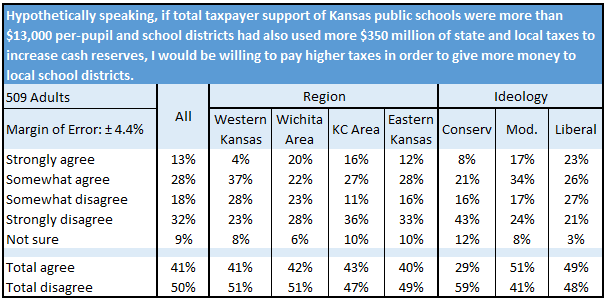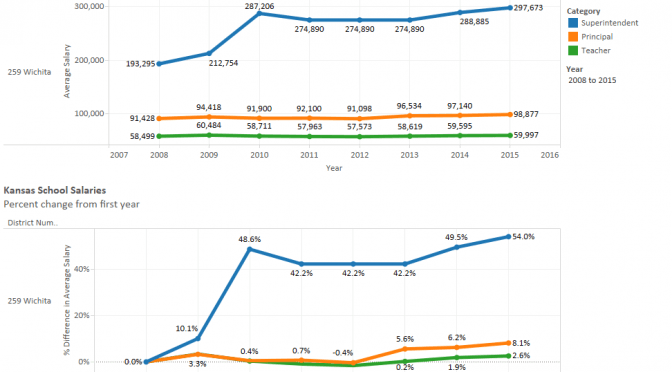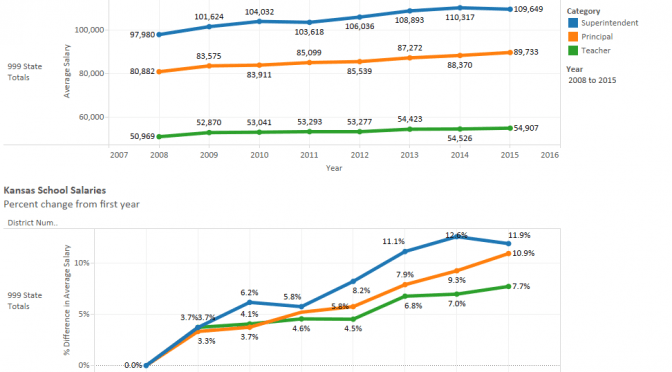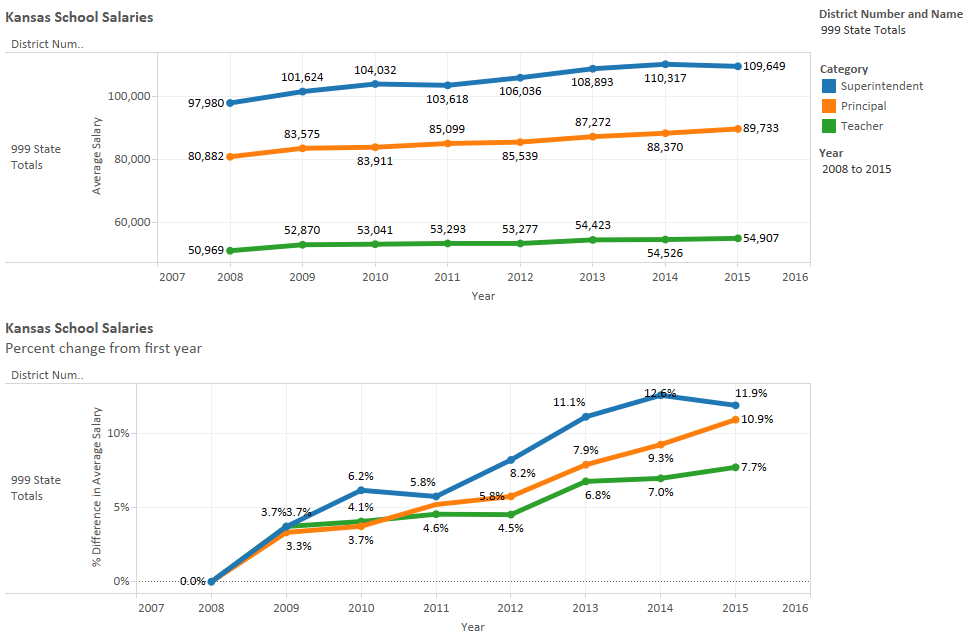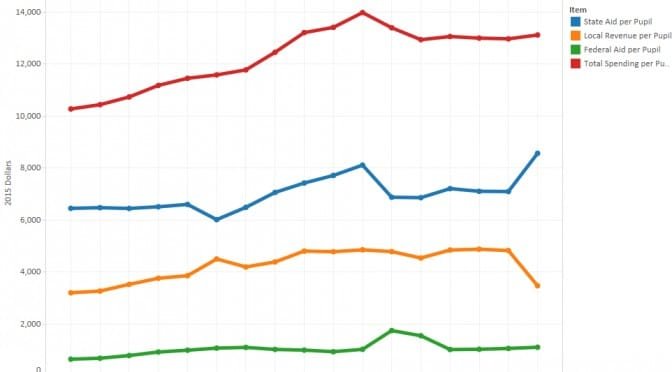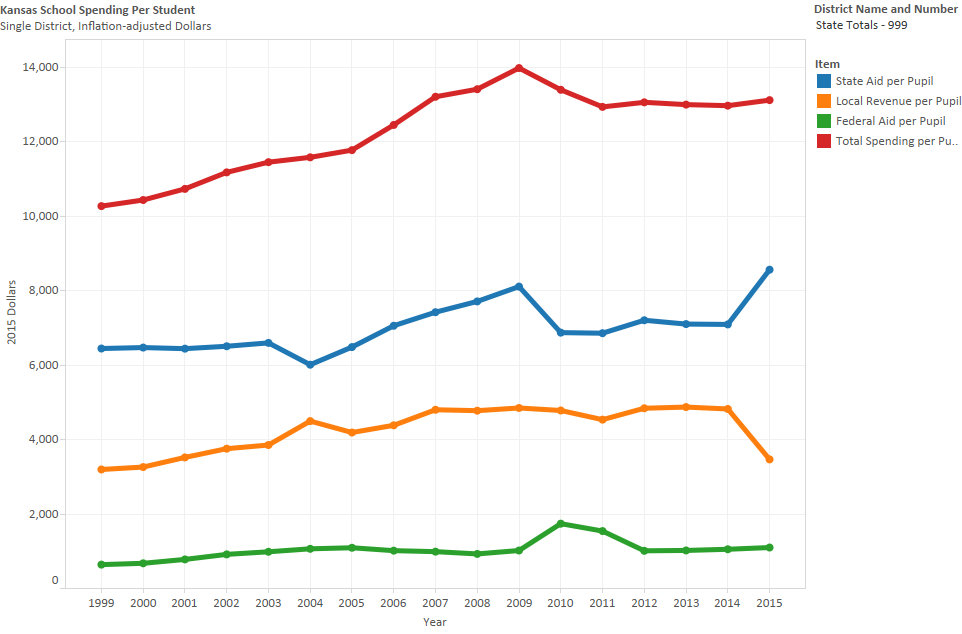Instead of pranking, Wichita public school students and their leaders might consider a few facts.
KSN News reported on an April Fools’ Day prank at Northwest High School in Kansas. The message is that the school is short of funds.
The KSN news story reported: “Wendy Johnson, the Director of Marketing and Communications for Wichita Public Schools also said, ‘This appears to be someone’s effort at a humorous April Fool’s commentary on the funding crisis that public education is facing in Kansas.’”
Also: “USD 259 Board of Education member Lynn Rogers called the prank, ‘very ingenious.’ Rogers says there was no harm done, but, the education funding issue is at its core, ‘no laughing matter. There’s some dark days for public education right now, and people have been very discouraged,’ Rogers said.”
When looking at this story, I wonder how the pranksters — likely students at the school — developed an opinion of issues like school funding. Who told them there was a “funding crisis?” Is that an opinion high school students developed on their own, or is it an opinion spoon-fed to them? The quotes from school district leaders provide the answer to that question.
It’s unfortunate that students are fed this opinion. Because when we look at actual numbers, the idea of a crisis doesn’t hold water. There is a lot of controversy over school funding in Kansas. Should teacher retirement fund contributions be included, or not? What counts as classroom funding? Should dollar amounts be adjusted for inflation, and at what rate? (Schools argue that their costs rise faster than the general price level.)
Schools tell us that their largest expenditure is on personnel costs. Across the country, the portion of current expenditures going to salaries and benefits hovers around 80 percent. 1


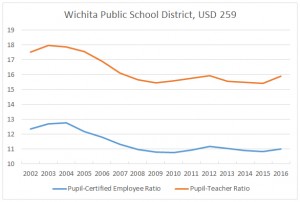
- National Center for Education Statistics: The Condition of Education, Elementary and Secondary Education, Finance, Public School Expenditures. Available at: http://nces.ed.gov/programs/coe/indicator_cmb.asp. ↩
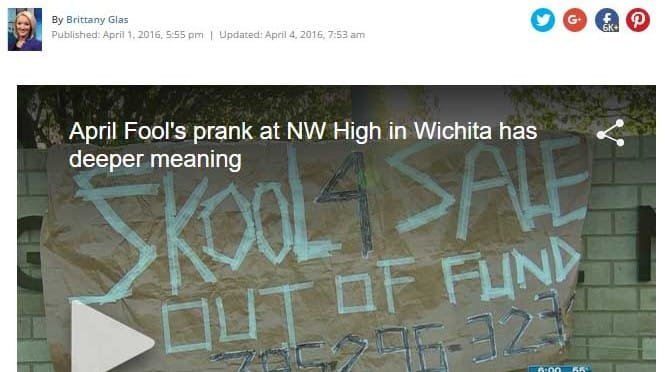


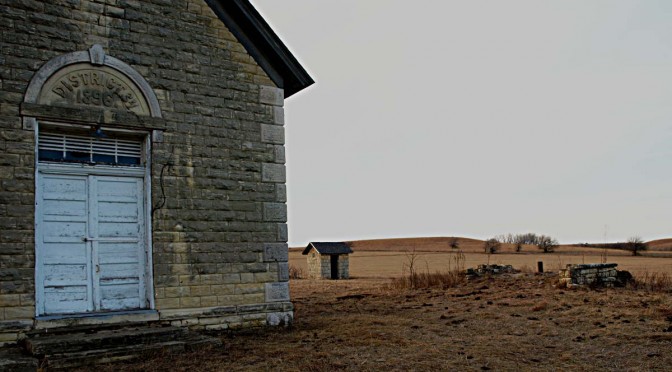

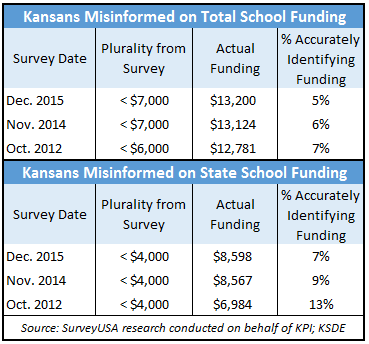 Kansas Policy Institute commissioned three surveys over the years and each time, the leading response (plurality) for total funding and state funding of schools was roughly 50% less than districts actually received that year and very few people knew the actual funding level. Of course, one cannot blame citizens for being misinformed given that media, school districts and other special interests have carpet-bombed the state with false claims of funding reductions and implications that actual funding levels were much lower than reality. And those propaganda efforts were working; note that a smaller percentage of Kansans could accurately identify the real funding levels with each successive survey.
Kansas Policy Institute commissioned three surveys over the years and each time, the leading response (plurality) for total funding and state funding of schools was roughly 50% less than districts actually received that year and very few people knew the actual funding level. Of course, one cannot blame citizens for being misinformed given that media, school districts and other special interests have carpet-bombed the state with false claims of funding reductions and implications that actual funding levels were much lower than reality. And those propaganda efforts were working; note that a smaller percentage of Kansans could accurately identify the real funding levels with each successive survey.